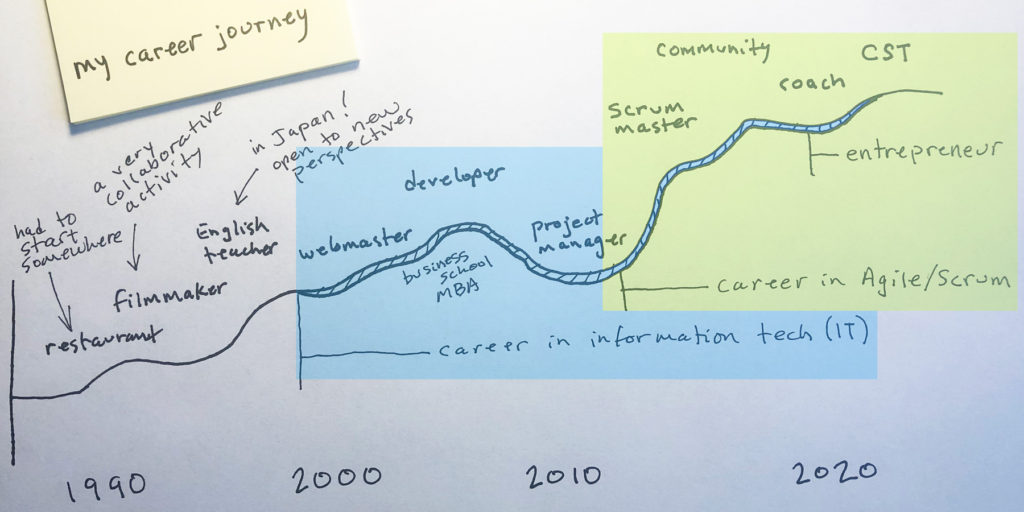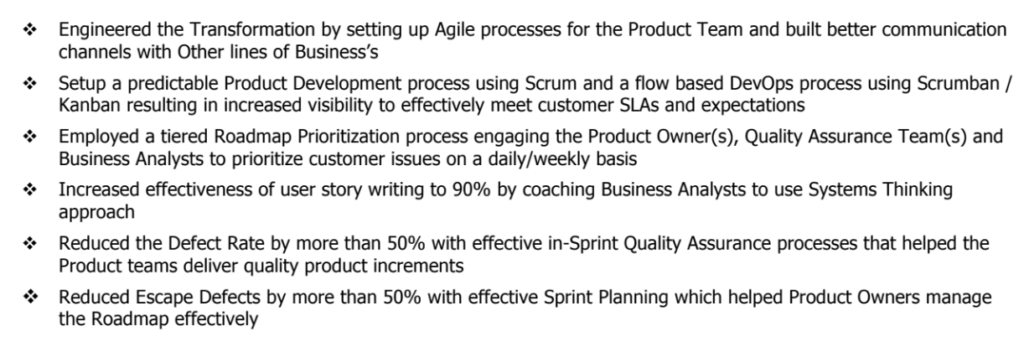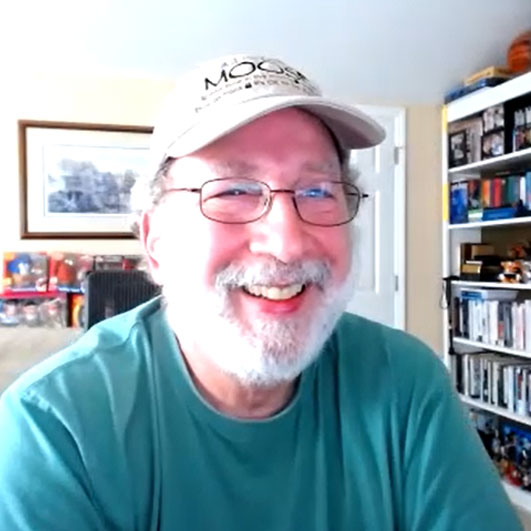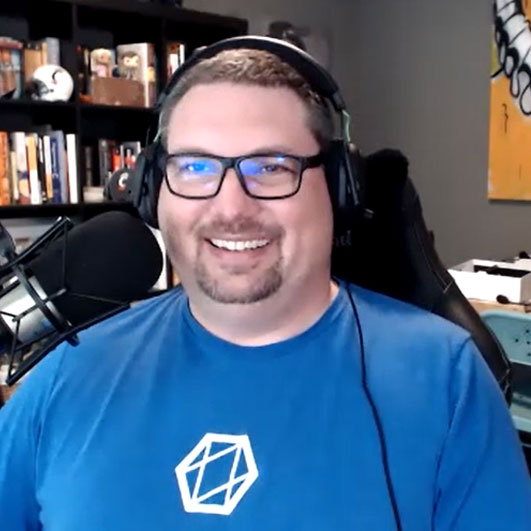Writing a Great Scrum Master Resume
Suppose you want to get a job as a Scrum master, and you need to build a resume tailored to this unique role. How are you going to organize this document, what are you going to highlight, and what might you want to leave out?
There are many considerations when writing a great resume, and it can be tricky or even stressful – especially for Scrum masters. Whether you’re experienced at the role or you’re just starting out, the Scrum master resume is different because the job itself is so unique. Like most jobs on agile teams, the Scrum master role requires soft-skills. It’s considered a leadership position, yet it’s often hard to pin down just what a scrum master does in a daily routine. On top of that, many organizations don’t know what they’re looking for (as myriad bad job descriptions will attest).
Sound Advice
Before putting together this guide, I did a bit of research, conducted a poll, and spoke to some very bright people who have been in the trenches of evaluating resumes and hiring outstanding scrum masters. One conversation that I had was with Bob Galen and Josh Anderson, hosts of the essential podcast: Meta-Cast. (I recorded our entire conversation and posted it on my own Agile Coffee podcast, episode 77).
Thanks to Bob and Josh!
Listen to Bob and Josh on
Meta-Cast: an agile podcast, delivered by agile practitioners.
A Great Way to Start is to Make a Plan
We’re all different. Some of us may be able to face the challenge of writing a resume head-on and bang one out in an hour or two. Not me. I like to approach the task with a bit more thought, introspection and intention. That’s why I make a plan by breaking down the idea of writing the perfect resume into smaller tasks; specifically, these four tasks:
- Gather my sources (past data, stories, and future goals)
- Draw up a target list of companies to apply to (at least characteristics, if not actual companies)
- Write a sloppy first draft (followed by a good night’s sleep)
- Create the final resume in a Scrum master’s voice and sprinkled with appropriate keywords
Mapping the Territory
Step one for me is all about gathering up data from my previous experiences. This will include not only the names, dates and locations of places I’ve worked, but also some of the tangible information about what I did at each stop. What value did I deliver? How much can my impact be measured and demonstrated? If my work experience is less than a couple years, I’ll be sure to include success stories from school or community organizations – they’re there if you look hard.
Which brings me to my first pro tip: use a tool like a journey map (or a mind map) to help you visualize your career highlights as you’re trying to identify those key skills and achievements that you want to call out. It’s even good to future-cast what you’d like your next 2, 5 or 10 years to look like in order to keep these goals in mind.
Here’s a journey map I did for my own circuitous career path:

Questions to ask yourself:
- Were you ever on a high-performing team? What did you contribute, and what values did you promote/model?
- Can you manage up? Can you lead without authority?
- Are you a learner? How do you “sharpen your saw”?
- Are you good at asking open-ended questions without having an answer already prepared? These questions asked out of curiosity can start meaningful discussions and open possibilities.
- What stories can you tell where you “brought home the bear” or can demonstrate success?
Tale of Two Companies
My second step before writing is to stop and ask myself who I’m writing to. What industries or specific companies are on the radar? You might already have a dream list of organizations that you’d love to work for, and you might also want to spend time researching the other rising stars on the horizon. Use tools like LinkedIn to help you craft your list.
But you’re not done yet. You might think your resume will be read (and adored) by your future boss, or maybe a hiring manager, but chances are it needs to clear some hurdles to arrive in those inboxes.
In our podcast session, both Josh and Bob talked about two different types of companies: what we might call Traditional vs Learning. (Yes, this is a grand oversimplification, and the labels could be different, but let’s roll with this.)
A Traditional organization in our example is heavy with bureaucracy and follows a laundry list of processes, making the system slow to change. Maybe they’re larger companies, a bit long in the tooth, with many hiring needs across a wide enterprise, so they likely rely on Artificial Intelligence seeking the right keywords and phrases in order to filter stacks of resumes quickly, eliminating the majority before any human gets involved.
On the other hand, the Learning organizations we discuss may be smaller, more nimble, and with more hands-on evaluation by hiring managers or HR folks. As a contrast to the Traditional companies, these Learning organizations are less interested in the keywords that AI is tuned to find. Instead, they seek our candidates who have a “roll up your sleeves and get it done” attitude, someone eager to add value, take risks and grow the company. A resume filled with evidence of victories is typically what they’re mining for.
Following this logic, your resume will be more effective if you first identify the Learning organizations and target them for your networking and job search.
Sloppy First Draft
Now that I’m ready to write (step #3), I try to spin up a quick and dirty first draft. The goal here isn’t perfection, so resist the urges of your inner critics for now – tell them they can help out tomorrow, if that calms the voices. With apologies to Anne Lamott who coined the acronym (my SFD stands for Sloppy First Draft), this is an opportunity to get everything onto a page to see what sticks. Overwriting is okay, we can remove unnecessary text in the morning.
If you’ve ever written a resume, you know there are specific sections traditionally included. These are the parts that I think work best in an order that focuses on what I think is most important:
- Summary or objective
- Skills section
- Professional experience
- Relevant projects from your community, church or school
- Educational history
- Certifications and professional courses
The Top Third
Did you know that people spend only seven seconds scanning the resume before deciding to continue reading or move on? This highlights the importance of starting strong and makes obvious that the top third of your resume’s first page is prime real estate. Fill it wisely with a statement showing your passion for the Scrum master craft and the problems you are made to solve.
If you list skills in a section after the objective or summary, keep your list short (3-5) and focused on the job of Scrum master. It might be great that you can code in a dozen programming languages, but that’s not what you’re being hired for. (If you think that your many skillz might maybe, possibly be relevant, you can include the fuller list at the bottom of the resume.) You want to keep the reader’s attention as you transition into the Professional Experience section where you will WOW them with your tales of accomplishment.
Stories Over Certifications
Highlighting your own unique passions and gifts will not only help you stand out, but it addresses the number one challenge with transitioning to a Scrum master role: there’s no traditional career path to this destination. Sure, many in this role came from a background in project management, software development or business analysis, but those are by no means the only (or best) routes to get here. I’ve met many career-changers (teachers, public service, athletes, and artists, to name only a few) who made the move successfully, myself included. That’s where stories help.
Stories are a big deal. People relate to stories. Lists of responsibilities and certifications, not so much.
In our conversation, Josh was very keen to point out that he doesn’t place much stock in certifications. He says that having a certification “doesn’t prove to me whether you can do the job or not.” Instead, he looks for a story. “In each job listing, can they demonstrate that they made life better?”
This sentiment is echoed by a Director I spoke with from a very large insurance company who reads a lot of resumes.
I look for expressions on a resume that give me a sense that prospective candidates are not just process oriented but understand their courageous leadership role. When people pepper the resume with a bunch of certifications, that generally underwhelms me and in fact may be a sign that someone values labels over learning.
CK, Director
Even if you don’t have much experience that translates, it’s not impossible to find projects or responsibilities to give you those wins. As Bob says, you don’t have to wait for someone to give you permission to take on a leadership mindset, just go out and do it. Find opportunities in your school, church or community organization where you can help a team visualize a goal, break the effort into small, inspect able steps, and keep the team learning from the work. Small projects organized in this way add up to big experience on your resume.
To sum up, stories trump certs. You may be better off putting certifications at the bottom or in a sidebar. List them if they’re relevant, but don’t make them the focus.
Finishing Touches
As you move from your first draft to your final copy (step #4), you might find the resume growing larger or slimming down. Overall consensus from my interviews and research advises not sweat the length of your resume too much. While these documents can extend up to four pages (if you’ve been in your career for a while and have many stories), something closer to one page is perfectly acceptable and more the norm.
Review the sections for clarity and brevity. It should go without saying to list your name and contact info clearly at the top, followed by a compelling objective and summary. Remember to revise that top third so that your passion rings out. List your top skills and certifications, but don’t make them the focus; share many good stories instead.
Connect the Dots
If you’re new to Scrum, you want to make sure that you can demonstrate aptitude despite not having Scrum master experience. So here is where you go back through the stories you wrote and connect the dots to “speak in the language of Scrum”. Take this opportunity to fine tune the words you use – make them actionable.
One successful coach who manages Scrum masters told it to me bluntly:
I look for evidence of what behaviors they have shifted on a team. So for example – instead of saying “Facilitated standups, refinement, retrospectives and demos” I look [ for statements such as: ]
“Improved standups and helped team better align on the work they are doing”
“Improved backlog refinement to help teams have a shared understanding of what they are building resulting in higher quality stories”
“Encouraged technical practices which led to a lower defect rate”
This helps me understand that the scrum master is not just facilitating events but helping the team get better.
LR, Senior Coach
TIP: Can’t find the right words? Have a look at a reference document such as the Agile Manifesto or the Scrum Guide. Find language that best describes how you delivered value and made an impact.
Examples of Actionable Language
Here is some sample language from a Scrum master resume:

The following language comes from a more senior Scrum master, perhaps someone transitioning into more of an agile coach role.

Resumes? We Don’t Need No Stinkin’ Resumes!
It’s a common axiom that many jobs we get come from people in our network. After all, it’s not what you know, but who you know. This certainly doesn’t mean that we no longer need resumes, but the importance of this piece of paper (or PDF) isn’t all that it’s cracked up to be. Sure, at some point you will very likely need to submit the document in some official capacity; but if you’ve already gotten good relationships forged with those who may be your future team mates, the resume doesn’t need to beat the AI and HR systems.
One great way to build your network is by sharing your passion online – Slack, Discord, and other communities come to mind. There you can ask meaningful questions, tell interesting stories, and offer relevant value when others offer a challenging situation. Don’t be afraid to let your passion show, and be sure to keep your resume updated with the stories that resonate the most with your online tribe.
Be prudent and stay honest. Everything you write on the resume matters.



